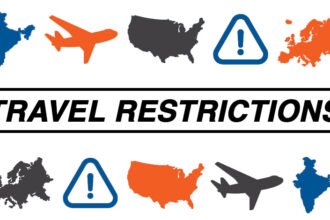Spousal sponsorship is one of the most common ways for couples to reunite and build a life together in a new country. However, immigration authorities take these applications very seriously, as fraudulent marriages or “marriages of convenience” have long been a concern. For this reason, applicants must provide substantial evidence that their relationship is genuine and not entered into primarily for immigration purposes.
This article explores how couples can effectively prove the authenticity of their relationship in spousal sponsorship cases, the types of evidence required, and strategies to avoid common pitfalls.
Why Proving a Genuine Relationship Matters
Governments across the world have strict measures in place to ensure immigration programs are not exploited. In spousal sponsorship, the key challenge for immigration officers is to distinguish genuine relationships from those entered solely for residency or citizenship benefits.
For example, in Canada’s spousal sponsorship program, the Immigration, Refugees and Citizenship Canada (IRCC) officers are trained to scrutinize applications carefully. Similarly, in the United Kingdom, the Home Office requires detailed documentation to establish a bona fide relationship.
A refusal not only delays family reunification but may also harm future immigration applications. Therefore, understanding what counts as proof—and how to present it is essential.
For a detailed overview of Canada’s rules, applicants can visit the IRCC spousal sponsorship guide.
Common Indicators of a Genuine Relationship
Immigration authorities assess relationships based on a combination of evidence, consistency, and credibility. Some of the most common factors considered include:
1. Length and History of the Relationship
- When and how the couple met
- Milestones such as engagements, weddings, or anniversaries
- Shared living arrangements over time
2. Communication and Contact
- Records of consistent communication (calls, emails, messages)
- Frequency and duration of visits if living apart
- Travel records, including boarding passes and visas
3. Financial Interdependence
- Joint bank accounts
- Shared property ownership or leases
- Evidence of financial support or shared expenses
4. Social Recognition
- Photos with family and friends
- Invitations to events or ceremonies together
- Affidavits or letters from relatives and community members confirming the relationship
5. Commitment to a Shared Future
- Plans for living arrangements in the sponsor’s country
- Children together or plans to start a family
- Joint memberships or insurance policies
These indicators demonstrate that the relationship exists beyond the immigration process and reflects genuine intent.
Types of Evidence That Strengthen an Application
Couples should submit a variety of supporting documents to show that their relationship is ongoing and real.
1. Photographic Evidence
Photos across different occasions, locations, and with different groups of people help demonstrate authenticity. Authorities look for natural, unposed pictures that reflect day-to-day life.
2. Communication Records
- Screenshots of chat histories
- Call logs
- Letters, emails, or social media messages
It is best to select samples rather than overwhelming the application with thousands of pages.
3. Travel Documents
Boarding passes, hotel bookings, and visas showing visits made to spend time together.
4. Financial Proof
- Joint bank statements
- Shared utility bills
- Proof of money transfers if living in different countries
5. Legal Documents
- Marriage certificates
- Joint leases or property ownership papers
- Custody papers if children are involved
The U.S. Citizenship and Immigration Services (USCIS) outlines similar requirements for couples applying for marriage-based green cards, reflecting global consistency in what counts as valid proof.
Red Flags That Trigger Scrutiny
Immigration officers are trained to spot inconsistencies. The following situations may raise suspicion:
- Significant age differences without cultural context
- Language barriers that prevent meaningful communication
- Brief courtships followed by sudden marriage
- Inconsistent answers during interviews
- Lack of interaction with each other’s families
While none of these automatically mean a relationship is fraudulent, they require stronger evidence to counter possible doubts.
The Role of Interviews
In many cases, immigration officers conduct interviews with the applicant and sponsor, either together or separately. These interviews often cover:
- Daily routines of the couple
- Personal habits, likes, and dislikes
- Knowledge of family members
- Relationship timeline
Consistency in responses is crucial. Preparing by reviewing shared experiences can help couples answer confidently and accurately.
Cultural and Long-Distance Considerations
Not all relationships look the same. Some couples may come from cultures where marriages are arranged or where cohabitation before marriage is uncommon. Others may have long-distance relationships due to work or study obligations.
Immigration authorities are aware of these variations but require cultural and contextual explanations. Providing detailed background about traditions, family involvement, and cultural norms can prevent misunderstandings.
For example, the European Union Agency for Fundamental Rights has published insights into how cultural practices impact migration and family law across Europe. You can explore their work on fundamental rights and migration.
Recent Trends in 2024–2025
As of 2025, spousal sponsorship programs continue to evolve:
- Canada introduced digital processing improvements in 2024, reducing average wait times to under 12 months for most applicants.
- UK Home Office updated its financial threshold in early 2025, increasing the income requirement for sponsors.
- Australia continues to prioritize partner visa applications but has introduced stricter checks on arranged marriages.
These changes reflect the ongoing balance between facilitating genuine reunification and preventing fraudulent applications.
Best Practices for Applicants
To maximize the chances of approval, applicants should:
- Be Transparent: Incomplete or misleading information can lead to refusals.
- Organize Documents Clearly: Present evidence in an easy-to-follow format.
- Provide Context: Explain unusual circumstances (age gaps, cultural traditions, long-distance).
- Prepare for the Interview: Review relationship details beforehand to avoid inconsistencies.
- Seek Professional Help: Immigration lawyers or certified consultants can strengthen complex cases.
The Immigrant Council of Ireland and similar NGOs across Europe also provide resources and guidance for applicants navigating spousal sponsorship.
Conclusion
Proving a genuine relationship in spousal sponsorship cases is about more than simply submitting documents. It requires a clear narrative, supported by consistent and credible evidence, that demonstrates the relationship is based on love, commitment, and a shared future rather than immigration convenience.
By understanding what immigration officers look for, avoiding red flags, and providing thorough documentation, couples can build strong applications that withstand scrutiny.
In the end, the goal of spousal sponsorship programs worldwide is to protect family unity while preserving the integrity of immigration systems. With careful preparation, applicants can successfully navigate the process and reunite with their loved ones.



